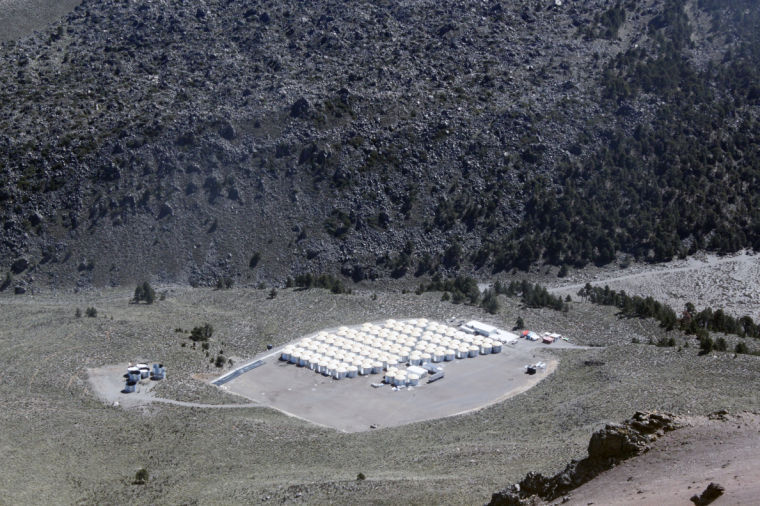
The High-Altitude Water Cherenkov Observatory
College Park isn’t the only place university scientists call home — a new observatory led by university researchers is up and running in Puebla, Mexico, where scientists are studying high-energy light rays as they hit the earth.
The High-Altitude Water Cherenkov Observatory, the product of a collaboration between the U.S. and Mexico, began operation in August and can detect incoming high-energy gamma rays as they hit the atmosphere. It’s not complete yet, said Andrew Smith, the project manager and a university physicist, but already, the technology enables scientists to better understand where the rays originate, a very precise and difficult science.
“We look at the whole overhead sky, all the time, day and night,” said Jordan Goodman, a physics professor and principal investigator for the funding of the project. “Any [gamma ray] that hits us, we can reconstruct which direction it came from.”
The gamma rays this observatory focuses on are the highest energy form of light, or electromagnetic radiation, and have energy greater than 100,000 electron volts. Because these rays are so rare, a detector must be large enough to detect them correctly, Smith said, and there are few of these machines in the world.
When the gamma rays enter the atmosphere, they break up to form “air showers,” millions of smaller, lower-energy particles. These particles can then be detected on at ground level with photomultiplier tubes inside large water tanks, causing them to show up as blue light — a phenomenon called Cherenkov radiation. From this information, scientists can determine the properties and direction of the gamma rays.
“We can tell by the pattern whether it was a gamma ray or some other cosmic ray,” Goodman said.
Because the particles emitted are so small, the team wanted to be at the highest elevation possible. Thus, a secluded location near the Sierra Negra volcano in Mexico — about 13,500 feet in altitude — seemed the perfect location for the HAWC observatory.
The project cost approximately $14 million.
“It’ll be tremendous,” Smith said. “Things that we were startled to see in a year, we’ll be able to see in a day or two.”
There are only about 100 people involved in the operation, Goodman said, which is “not an unbelievable amount of people” given the extremity of the project and large quantities of data being collected.
Among the contributors were several students, like Nathan Borak, who started working with the team this summer as a lab assistant.
“I actually realized that I wanted to work in that environment more,” the junior physics major said. Borak always enjoyed physics and problem-solving, he said, but when he started working for this project, he realized it entailed so much more beyond basic textbook problems. He observed a lot of planning, funding and organization work.
Borak wrote software that monitored the photomultiplier tube data and ran an experiment to test water quality this summer. He was amazed at how one could study and observe such fundamental physics in a setting with such low-level hardware, as opposed to more high-tech and expensive equipment, he said.
“It was interesting to see how science is actually done,” Borak said.
The university was previously involved with a gamma ray observatory called Milagro, located in Los Alamos, N.M., which had a large pond as opposed to the 300 tanks with photomultiplier tubes expected at HAWC. These tanks can segment the light entering the area, making it easier for scientists to study the rays, said Brian Baughman, a university research associate with the project. When HAWC is fully completed, it will be about 15 times more sensitive than Milagro, he said.
“We expect to observe things that have not been observed before,” Baughman said.
The team members have high hopes for the observatory and they plan to establish a new view of the high-energy sky and to understand the mysterious, Goodman said.
“We’re looking to study high-energy gamma rays, and we’re looking to study the unusual,” he said. “Because you never know what you’ll find when you start looking.”



